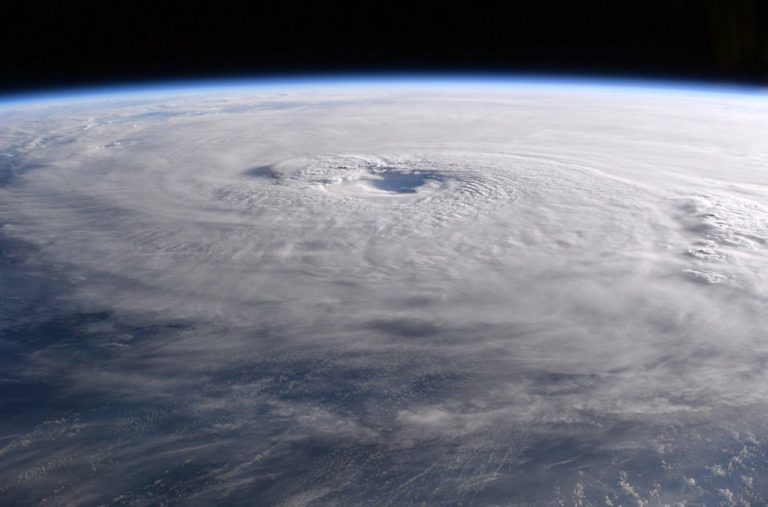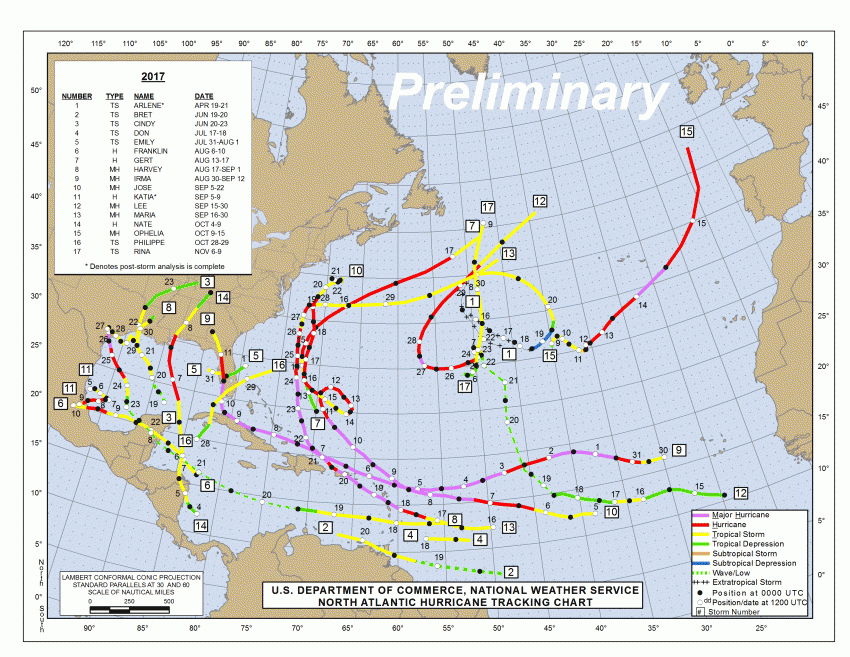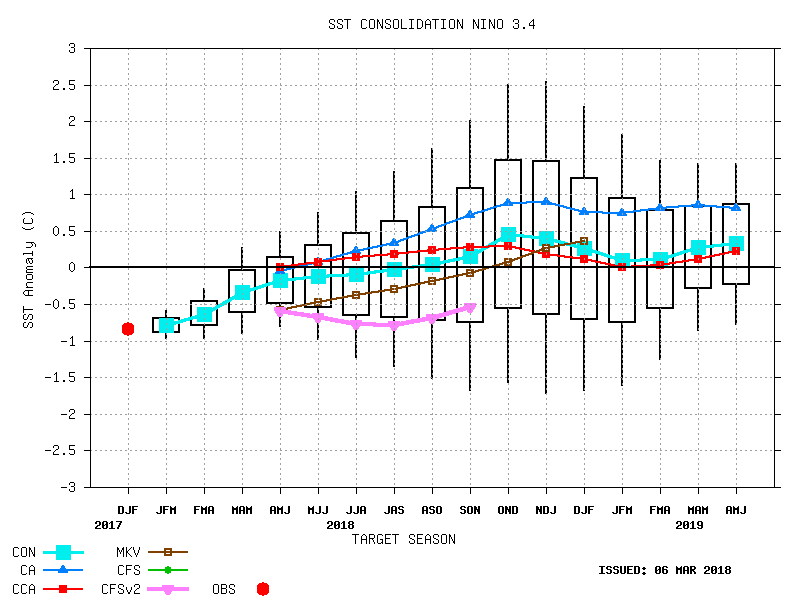Atlantic Hurricane Season 2018 Looks Closer to Normal After Hectic 2017

The 2017 hurricane season in the Atlantic basin was one of the most active and destructive on record (see graphic below). In terms of ACE (Accumulated Cyclone Energy, a measure of the total destructive power of all the cyclones in the season), it was the seventh-most active season on record. Hurricane Harvey became the costliest Atlantic hurricane ever after wrecking the Houston, Texas metro area in late August. Hurricane Irma, the strongest hurricane ever observed outside of the Gulf of Mexico and Caribbean, raked the northern Caribbean and southeast U.S. in early September. Just a few weeks later, Hurricane Maria (lead image, courtesy of astronaut Paolo Nespoli and NASA) devastated Puerto Rico, causing widespread destruction from which the island is still recovering.

The energetic 2017 season can mostly be blamed on a favorable orientation of the ENSO (El Nino Southern Oscillation) weather pattern. Specifically, it was in the negative phase (La Nina), typically favorable for tropical cyclone development in the Atlantic basin. Sea surface temperatures were also running above normal over the Atlantic, providing fuel for cyclone development.

The La Nina that developed in Fall 2017 has persisted through the winter, but there are indications that it will swing back towards neutral (see graphic above), or perhaps even rise into the positive (El Nino) phase, albeit weakly positive. El Nino is typically not as favorable for hurricane development in the Atlantic due to increased upper level winds which tend to disrupt hurricane organization. However, even less-active-than-normal seasons in the past have provided devastating landfalls. Hurricanes Hugo in 1989 and Andrew in 1992 both occurred in otherwise quiet seasons. Sea surface temperatures over the Atlantic basin are also expected to remain near to above normal. And seasonal forecasts can change – in 2017, early predictions of a developing El Nino and a quiet hurricane season proved wildly optimistic. The bottom line is that even if 2018 turns out to be a quieter tropical season than 2017, coastal residents shouldn’t be caught unawares when a major hurricane looms.
